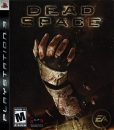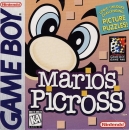From IGN - http://au.wii.ign.com/articles/807/807525p1.html
This will easily be my GAME OF THE YEAR - and I so can't wait for it...
....
This is the closest the Mario franchise has come to attaining the soaring heights of the original Super Mario 64 back in 1996, and the more we see, the more we love. What is more, it sounds like the game is going to be huge, too, with 6 different themed areas totalling 40 galaxies and 120 grand stars to unlock. Sweet.
We played on the 'Star Dust Galaxy' trail in the E3 demo - exploring this very early portion of the game thoroughly. The IGN US team delved into other areas - that you can read all about here. At once, all fears that the Wii remote wouldn't provide the accuracy are dispelled, and the controls exude old school familiarity.

The nunchuk's control stick still sends the portly plumber on his merry way, with the same accuracy that we've enjoyed since the 64 version. The A button makes Mario jump, Z button makes him duck, crawl and back flip and the camera can be adjusted with the C button and D-pad. However, the remote's context-sensitive on-screen pointer (either a star or a hand) mixes things up a bit. No longer are you simply controlling Mario by himself; instead, you have to factor in a cursor that can manipulate objects in the world and collect star shards and other itemsobjects.
The B-trigger shoots these accumulated star fragments at enemies - which becomes second nature alongside the shake-to-spin-attack. What all this means is, you're often multitasking and manipulating two objects on-screen at once, which makes for some pretty cool scenarios. While we didn't get to play it ourselves, the co-operative mode lets a second player jump into the action with their remote to help hold back boulders and collect star-chunks too. Sure, it's no substitute for a bit of Mario and Luigi tag-team action, but if your little brother is pestering for 'his turn', it might just spare you a nasty spat.
Levels are spherical in Super Mario Galaxy. You can wander from one side of a planetary body to the other, and the camera will automatically rotate and reorient itself to give you the best possible view. Any time that Mario is obscured, he becomes silhouetted through any object between himself and the camera, ala Super Mario Sunshine.

The point-of-view is set a little farther back than we're used to - and this makes Mario seem a little sluggish, which was also noted by our US colleagues. To counteract this, you can still long-jump by holding down Z and A while running forward. If it's a small enough planetoid, it will actually send you spinning around the planet, a few feet off the ground, which is pretty funny.
You see, gravity plays a big part in the puzzles this time around. You're able to leap from one planet to another, to run around the inside of a circular room and take advantage of the geography more than in previous games. This truly is a galaxy of playable micro-planets, linked together with chains of warp stars.
In the opening area, we're introduced to these concepts bit by bit. First, the basics of movement are set up. Then, by way of a little rabbit-catching micro-game, we're shown how to unlock pathways and eventually assemble star pieces together to create new star launch points. But that's just the tip of the gameplay iceberg, from what we can gather.
...
Already, two new suits have been unveiled: Bee Mario and Boo Mario (harkening back to the days of Super Mario Bros. 3's Tanooki, stone and frog suits), with levels tailor-made to take advantage of the inherent abilities of each suit. We're guessing there's at least one more suit to be revealed, since these things tend to come in threes. Unfortunately, we didn't get the opportunity to sample Bee Mario, and Boo Mario wasn't on display at the show.
We did, however, sample one of the easier Grand Star unlock tasks - following from one planetoid to another, eventually reaching a green warp pipe that took us into the inside of a circular planet. Once we took the plunge, we were taken to the inside of the spherical room. Moving, elongated, electrified platforms circled around the inside of the room, creating nasty hazards to thwart the progress of your ultimate task - switching the colours of small sets of squares lining areas of the curved walls.
By stepping on a square, the colour is reversed. By reversing them all, the imprisoned Grand Star at the centre of the room is unlocked and that particular area is cleared. It was very basic stuff, but it served as a great indicator of what we can expect. The mechanics are so tight that it's easy to see Miyamoto tinkering alongside the R&D department in Japan while the controller's configuration was being finalised just to ensure that Marion would work flawlessly. And it does.

We have to make mention of two other critical areas before this preview runs its course - the presentation and the Koji Kondo's score. Firstly, as hinted at in Nintendo's official E3 2007 trailer, Kondo has really gone for the epic vibe. In fact, with its horns sections and midi orchestral arrangements, the first thing we thought of was The Legend of Zelda's sweeping overworld theme. It's still playful and arguably lighter than Zelda's score, but if Kondo was going for epic, and intergalactic, he succeeded. It's by far the grandest arrangement in a Mario game to date.
Super Mario Galaxy also kicks a visual goal as well. This is, without doubt, the best looking Wii game yet unveiled. It's colourful, fluid and touting graphical effects that nearly put it on par with some PS3 and 360 efforts. If it weren't for the painfully lower resolution, you'd swear this was running on different hardware.
The game engine makes full use of the Wii's excellent depth-of-field, transparency, refraction and light bloom effects, painting a universe of planets as varied and eye-popping as the first time you laid eyes on Mario 64 back in the day. It's clear in games like Galaxy and Metroid Prime 3 what the Wii is capable of when a developer takes the time. This is stellar stuff - no pun intended.

Also impressive is the draw-distance. Zooming over galaxies reveals planetary bodies stretching as far as you can see - with, at our count, as many as 30 different planetoids in the frame during some moments. There's nary a drop in the framerate, either.
All of this is just icing on the cake, really. The most critical point to get across is that Galaxy is tremendously more fun than Super Mario Sunshine. Even in the somewhat limited time we had with the game, Galaxy manages to retain the classic platforming feel of the original series without resorting to gimmicky levels like Pianta village. Gravity and space travel is fundamental, unlike the F.L.U.D.D. pack, which was a lame duck.
As if you couldn't tell already, we're painfully excited to play more Galaxy. On the flipside, though, this is going to be one of those magical games that you'll want to savour in the quiet of your own gaming space, rather than on a bustling game show floor. This is pure Nintendo gold and November can't come soon enough.
Gesta Non Verba
Nocturnal is helping companies get cheaper game ratings in Australia:
Wii code: 2263 4706 2910 1099



















































